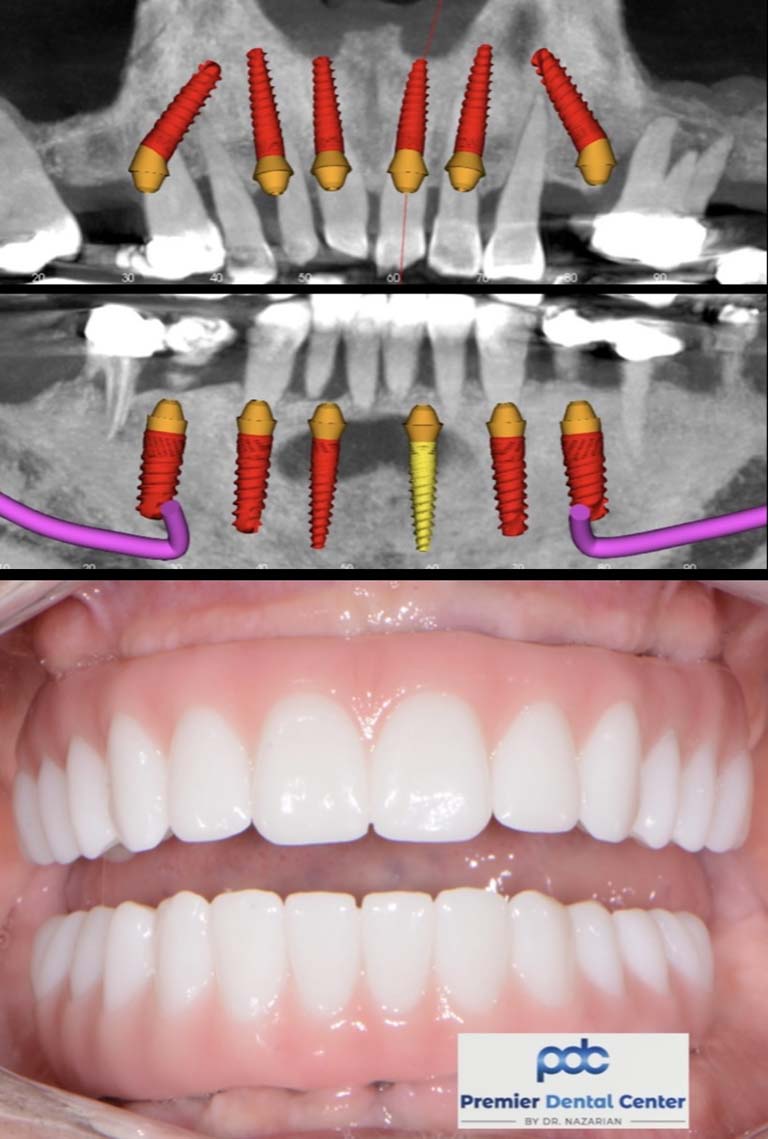The Basic Principles Of Dental Sense
The Basic Principles Of Dental Sense
Blog Article
How Dental Sense can Save You Time, Stress, and Money.
Table of ContentsThe Ultimate Guide To Dental SenseThe 20-Second Trick For Dental SenseMore About Dental SenseDental Sense - The Facts
are medical tools operatively implanted into the jaw to bring back an individual's capability to eat or their appearance. They provide support for synthetic (fake) teeth, such as crowns, bridges, or dentures. When a tooth is lost because of injury or disease, a person can experience complications such as quick bone loss, faulty speech, or changes to chewing patterns that lead to pain.Oral dental implant systems contain a dental implant body and oral implant joint and might likewise include an abutment fixation screw. Dental implant vs bridge. The oral implant body is operatively inserted in the jawbone in place of the tooth's origin. The oral implant abutment is normally affixed to the dental implant body by the abutment fixation screw and extends with periodontals into the mouth to support the attached man-made teeth
(https://businesslistingplus.com/profile/dentalsense1/)Framework of The Dental Implant System choosing dental implants, talk to your dental supplier regarding the prospective benefits and risks, and whether you are a prospect for the procedure. Points to think about: Your overall wellness is a vital consider establishing whether you are an excellent candidate for oral implants, the length of time it will require to recover, and how long the implant may remain in location.
Smoking might influence the recovery procedure and lower the lasting success of the dental implant. The recovery procedure for the implant body might take several months or longer, throughout which time you generally have a temporary abutment in area of the tooth. the oral implant treatment: Thoroughly follow the dental health directions offered to you by your oral supplier.
The Basic Principles Of Dental Sense
Implant failure can lead to the demand for one more surgery to fix or change the implant system. Restores the ability to eat Brings back aesthetic appearance Aids maintain the jawbone from diminishing due to bone loss Preserves the health and wellness of the surrounding bone and gums Helps keep adjacent (nearby) teeth secure Improves top quality of life Damage to bordering natural teeth throughout dental implant positioning Injury to the surrounding cells during surgical treatment, such as sinus opening Injury during surgical procedure (for instance, crack of surrounding jawbone) Inadequate feature, such as feeling like the teeth do not bite together usually A sensation that the tooth is loose or turning in area resulting from an abutment screw loosening up Implant body failing (looseness of the implant body) as a result of systemic infection, which may be most likely in clients with uncontrolled diabetes mellitus as a result of neighborhood infection in bone and gums supporting the implant body because of delayed recovery, which may be more probable in people that smoke Trouble cleaning the gum tissues around the dental implant, resulting in poor dental hygiene Untreated gum disease Post-surgical tingling due to nerve impingement or damages Always inform healthcare companies and imaging service technicians that you have oral implants before any magnetic vibration imaging (MRI) or x-ray procedures.
FDA is not familiar with any type of unfavorable events reported for MRI or x-ray procedures with oral implants. Oral implants systems are normally constructed from materials that comply with worldwide agreement standards of the International Organization for Standardization (ISO) or ASTM International. These criteria have information of what makes a secure product.

A dental implant is a framework that replaces a missing out on tooth. With screw-like devices, the doctor inserts an implant right into the jawbone, and it acts as an anchor for an artificial tooth, called a crown.
The Facts About Dental Sense Uncovered
Some individuals are not eligible for dental implant surgical treatment. It is for dental specialists to operate on individuals with: severe illnessuncontrollable metabolic diseasebone or soft cells disease or infectionIf these issues are resolved, a person can have the surgical treatment. In, dental specialists avoid operating people with: If people with any one of the above undertake dental implant surgical treatment, there is a higher danger of the implant failing.

Oral dental implant surgical treatment is an individualized procedure. It's not the very same for everyone. The following provides a basic summary of what you can anticipate your dental professional, oral cosmetic surgeon, periodontist or prosthodontist to do: Position the implant surgically. Give you time to heal. Affix the post and last crown, bridge or denture.
Next off, your cosmetic surgeon will very carefully position the oral implant right into your jaw. If your implant is near the front of your mouth, your dental professional will certainly make a momentary tooth for you to put on till you recover.
An Unbiased View of Dental Sense
Your supplier can tell you what to expect in your scenario. Throughout the recovery stage, your jawbone must fuse to the dental implant. This procedure, called osseointegration, is crucial for stability and long-lasting success. This procedure can take anywhere from three to 9 months. In some cases, it may take longer.
Once your dental implant heals, your dental practitioner can connect the abutment (tiny port message) and your final remediation (crown, bridge or denture). This typically takes concerning one hour to finish and may need a 2nd minor surgical procedure. You should not really feel any kind of discomfort throughout your oral implant treatment due to the fact that your copyright will certainly use medicine to numb your periodontals.
Report this page